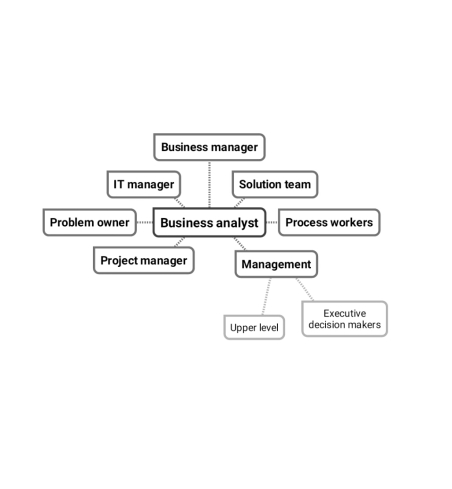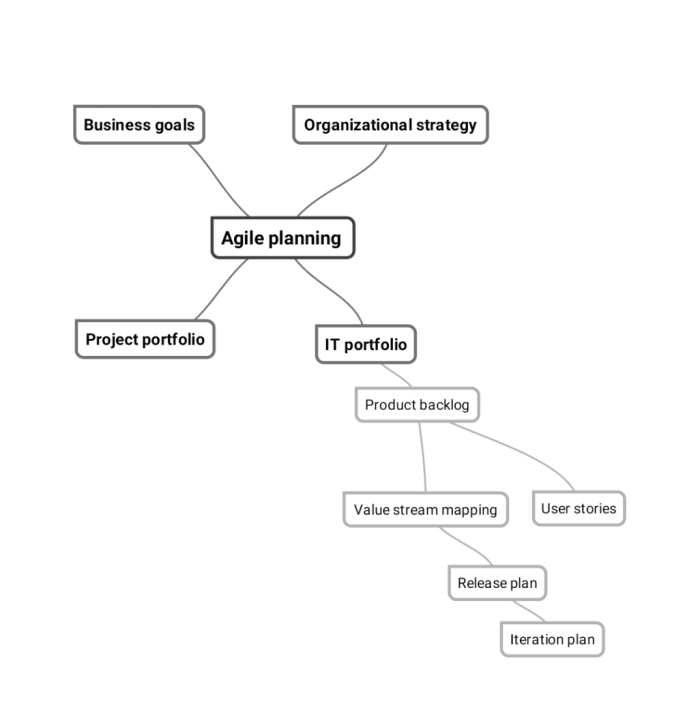Agile is about maximizing value to the customer by delivering great functionality at a reasonable cost, that helps him to win at his market. It is about helping him to serve his customers better. Gone are the days when the business analysts used to just note down what the end users asked from the system, and transferred them to the development team without any value addition. This shift in focus from conformance to requirements to maximizing value to the customer’s business opens up a plethora of opportunities for the competent and qualified business analyst. The mind map provided below depicts the ‘business analyst’ at the center of the stakeholder map.
Blue ocean business analyst
- Determines the actual problem to be solved in the organization
- Understands the business issues and challenges of the organization and industry
- Identifies the organization’s strengths and weaknesses and suggests areas of improvement
- Reviews and edits requirements
- Documents the solution to the problem
- Creative problem solving
- Identification of process improvement opportunities
- Feedback collection and sharing
- Communicates functional product and business standards
- Facilitates business community transition from problem state to solution state
- Evaluation of alternative solutions
- Product stakeholder management
- Augmenting the change readiness of the organization
- Product evaluations
- Facilitation and moderation of meetings
- Presentations
- Effective communication
- Enough technical knowledge to converse effectively with technical stakeholders
- Conflict resolution between the business and the technical teams
- Generating enthusiasm about the product
- Facilitates decision making
- Effective management of requirements changes
- Effective tracking of product issues to closure
- Leads the acceptance testing efforts
Development team is not the differentiation to the customer’s business any more. It is the availability of great business analysts who can identify those killer functionality, that will differentiate his organization from the competition is the key to value maximization. It will even better if those great functionality articulated by the business analyst can move the organization from the bleeding red oceans to the blue oceans.

